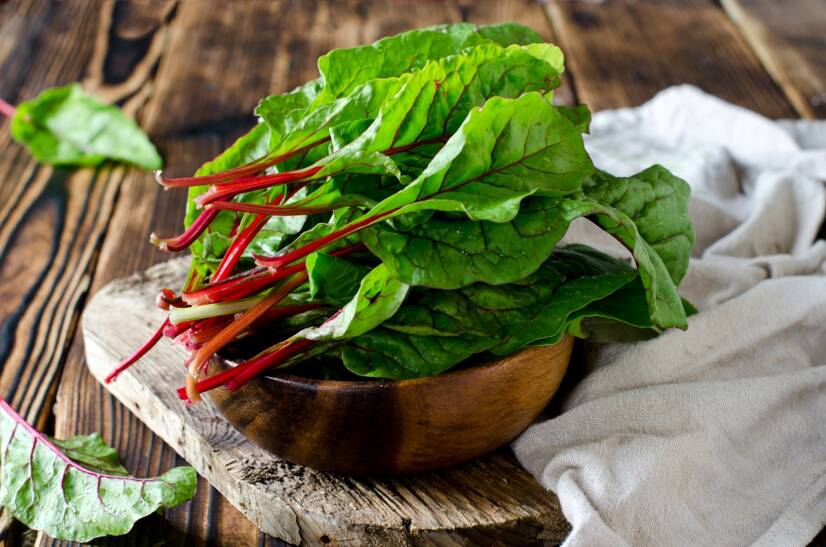- Herbarium or from alchemilla to jindava (Jaroslava Bednářová) - characteristics of chard
- Herbarium or nature in your kitchen (Jaroslava Bednářová ) - use and cultivation of chard
What is chard? How is it grown? What are its health effects?

Chard is a very old plant species. People have forgotten about it over time, but nowadays chard is once again coming to the fore. This plant is an excellent alternative to spinach, kale and various other leafy vegetables.
Characteristics
Chard is a vegetable that has receded into the background over time, but is now once again found on the plate and in the shops. It is one of the wonderful substitutes for another very popular vegetable, spinach.
Historically, chard was very popular with the Romans and was first described scientifically by Carl Linné in 1753. It was only in time that its cultivation spread from northern Italy to Europe. It is an ancient vegetable that has fallen into oblivion over time.
Today, chard can be used again in the kitchen as an alternative to spinach, cabbage and other leafy greens.
Chard is characterised as a stemmed, petioled vegetable. Its disadvantage over spinach is that it is more sensitive to cold weather and is also less hearty. The plant can be planted all year round.
Beetroot, commonly called chard, is a plant that produces a rosette of large, glossy, upright leaves about 60 cm high in the first year. In unfavourable conditions, a densely foliaged stem sprouts in the first year, but usually not until the second. It grows up to one metre high with green flowers that are curled into a ball. The seeds are placed in a raceme.
It is a biennial plant that has evolved from the beet. The colours of the leaves are dark green, light green, red or purple. The fruits of the plant contain considerable amounts of vitamins A, B, E and minerals such as calcium, iron, potassium, magnesium.
It has a large amount of carotenes which protect the mucous membranes in our body. The high amount of complex carbohydrates that chard contains is a good source of glucose (brain and nerves).
The thickness and colour of chard stems also vary depending on the variety grown. It is recommended to eat it with dairy products because its leaves contain oxalic acid, which inhibits the use of calcium.
Internal use
Because chard contains a lot of fiber (which binds not only water but also fat), it is beneficial for the digestive tract. It speeds up intestinal peristalsis, prevents constipation, and eliminates flatulence.
Because it contains a lot of beta-carotene (green colouring), this substance has a positive effect on the human nervous system, relieves stress and improves overall mood. After eating chard, you will feel more vital and fresher.
Regular consumption helps fight anemia. It contains a large amount of iron and is therefore an amazing prevention against anemia.
Chard is a rich source of calcium and vitamin K, so when you consume it frequently, you strengthen not only your teeth but also your bones.
Its use reduces the risk of stro ke (stroke) and has an antihypertensive effect (lowers blood pressure). Thanks to its minerals, it positively regulates the heartbeat, thus protecting it.
Mangold contains a large amount of antioxidants, which are the right prevention against cancer.
Because chard prolongs the digestion of carbohydrates in the digestive tract, it reduces the action of glucose in the body. It is therefore suitable for diabetics. It effectively regulates the glucose level in the human body and prevents metabolic disorders.
Harvesting and storage
The harvesting of chard begins in early July and ends in autumn. Only the 2 to 3 outer leaves of the plant are picked. Chard can survive outdoors during the winter.
If you pluck more leaves, the chard will unfortunately not last until late autumn.
Harvest the chard after 2 months of sowing.
In summer, water the chard sufficiently so that it does not dry out. Loosen the soil regularly and try to keep it weed-free.
In the autumn, the chard should be protected from frost. It can therefore be stored in a greenhouse or greenhouse.
Harvest leaf chard 30 days earlier than stem chard. Harvest stem chard 90 to 100 days after emergence. Leaves and stems are harvested by successive trimming. Always harvest leaves and stems immediately before eating or before use, as they wilt quickly.
Freezing is the way to preserve this plant for the long term.
Where to buy chard?
The great advantage of chard is that it is very easy to grow. You can grow it in the garden - almost anywhere. However, it likes moisture and soils with higher nutrient content.
If you opt for a more convenient alternative, buying chard is not difficult at all. You can find different varieties on the ubiquitous health food websites.
Uses of chard not only in the kitchen
There are many varieties of chard and some of them are decorative. The advantage of chard can be considered as its long-lasting harvest. The leaves of chard serve as a substitute in summer when spinach expels its flower.
It is a vigorous plant. Only a few specimens are needed in the bed to add variety to the menu. Smaller plants can also be planted in larger pots on the balcony.
The leaves and stems of the chard have the sweet taste that beetroot is known for.
Chard can be enjoyed in various states of preparation, whether in salads, wraps, stewed or boiled, or added to soups.
Here are some tips on how to incorporate chard into your diet:
- add fresh chard leaves to scrambled eggs or omelettes
- add the leaves and stems to juice or smoothies before blending
- add chard to a pan with oil and season with black pepper, garlic and parmesan cheese
- can be eaten as a side dish or added as a vegetarian dish, for example with roast potatoes
Nutritional values of chard in the table
| Energy value | Carbohydrates | Fats | Protein |
| 108 kJ | 4 g | 0,28 g | 2 g |
Interesting resources










